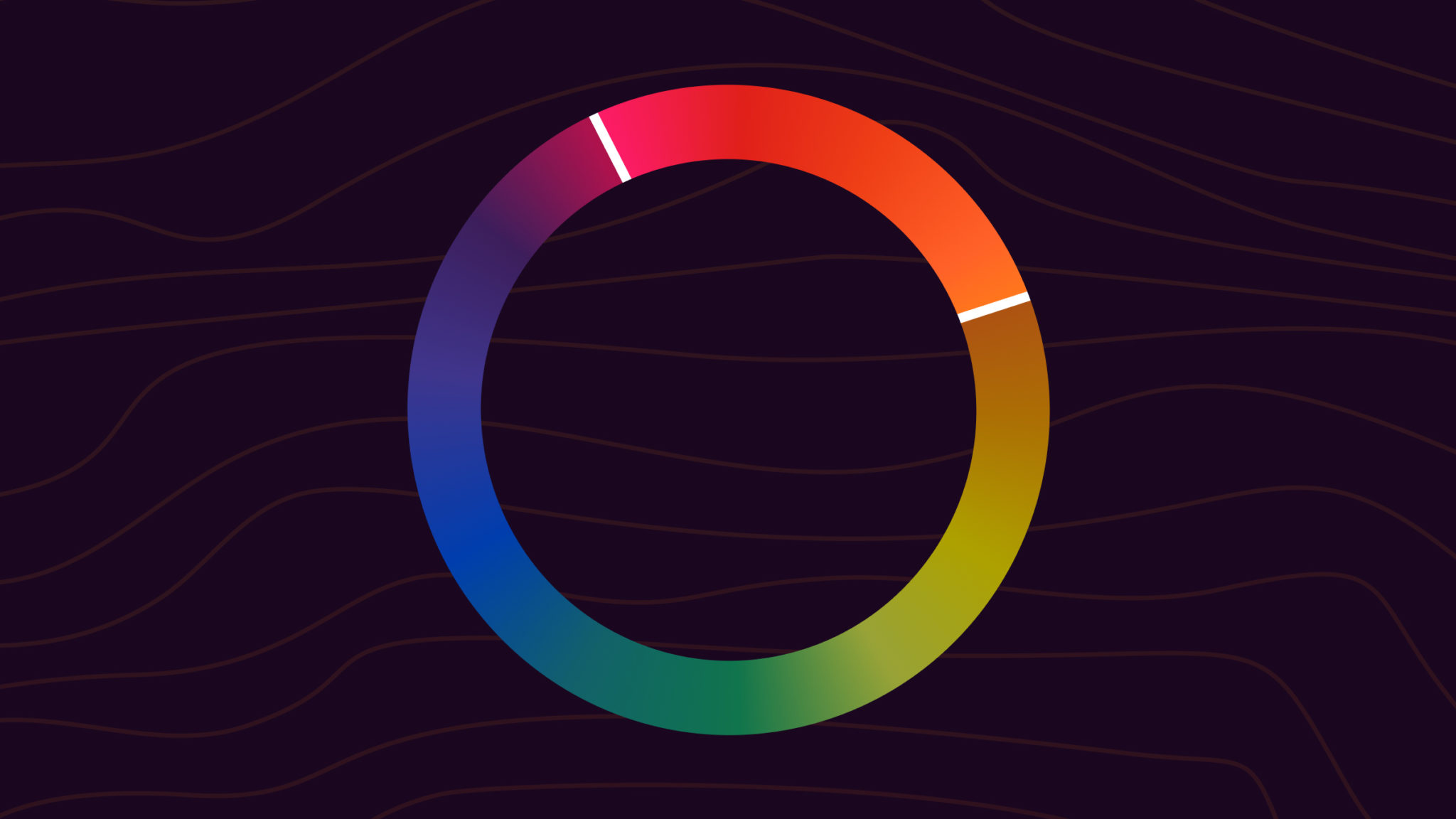Have you ever noticed the red, red-orange, and orange shades of the setting sun? Or the vibrant reds, yellows, oranges, and purples of autumn leaves? What is it that makes these hues so congruous and harmonious?
Well, the answer lies in a concept known as ‘analogous color schemes‘ – schemes comprising colors that are next to each other on the color wheel. Since these colors look pleasant and are easy to pick (simply choose a dominant color, and the colors either side of it will become your supporting colors), designers of all levels often turn to analogous color schemes.
What is an Analogous Color Scheme?
As we mentioned, analogous color schemes are made up of colors that are next to each other on the color wheel.

A typical analogous scheme would consist of a dominant (generally primary or secondary) color, then a supporting (generally a secondary or tertiary color), and a third color which is either a combination of the first two colors, or an accent shade that creates a ‘pop’.
Often, designers start an analogous scheme with a primary color, and use the secondary and tertiary hues as accents.
Analogous Colors in Art
Not only can you observe analogous colors in nature, but you can also find them in the works of a number of famous artists.
For instance, Vincent van Gogh’s ‘Irises in a Vase‘ painting uses a green, green-blue, and blue-violet color scheme. Another of his works, ‘The Olive Trees‘, displays a masterful and subtle use of a cool color scheme. ‘The Water-Lily Pond‘ painting by Claude Monet is another excellent case study on the use of analogous colors.
Best Analogous Color Schemes for Interior Designs
1. Red, Red-Orange, and Red-Violet
These warm hues can work together to create a relaxing bedroom atmosphere. With such a calming and cozy vibe, it is almost impossible to skimp on your little siesta.
2. Blue-Green, Green, Yellow-Green
Refreshing and smooth, this trio is one of the most popular choices for interior designers. The brightness and lightness of these hues create a soothing and happy place without being too hard on the eyes.
3. Yellow, Yellow-Orange, and Orange
If you want to go for something bright and retro, the yellow, yellow-orange, and orange combination is worth considering. When using a yellow color scheme, it is best to pick one color as your dominant shade.
4. Red, Red-Orange, Orange
This can give off a retro vibe while simultaneously making a room feel slick and contemporary. The colors complement each other beautifully, adding brightness and personality to your living space.
5. Blue, Blue-Violet, Violet
Cool and calm, this trio is super chic, ultra trendy, and perhaps even slightly feminine. Their positions on the color wheel, as well as the complementary undertones, make these shades work well together. If you see this combo as too subdued, try going for violet red to add a bit of dominance.
6. Green, Yellow-Green, Yellow
This combination is a textbook example of how analogous color schemes can breathe life into a living space. A vibrant and exciting trio, it works in tandem to induce feelings of joy, fun, and cheerfulness.
Wrapping Up
To sum up, analogous color schemes provide a simple and efficient way to produce mind-blowing results.
However, when using analogous colors, it is important to ensure accessibility – for instance, people suffering from CVD (Color Vision Deficiency) or color blindness may not be able to properly perceive certain analogous color palettes. You do not want to create magic, only to find that a large proportion of your audience is deprived of it.

